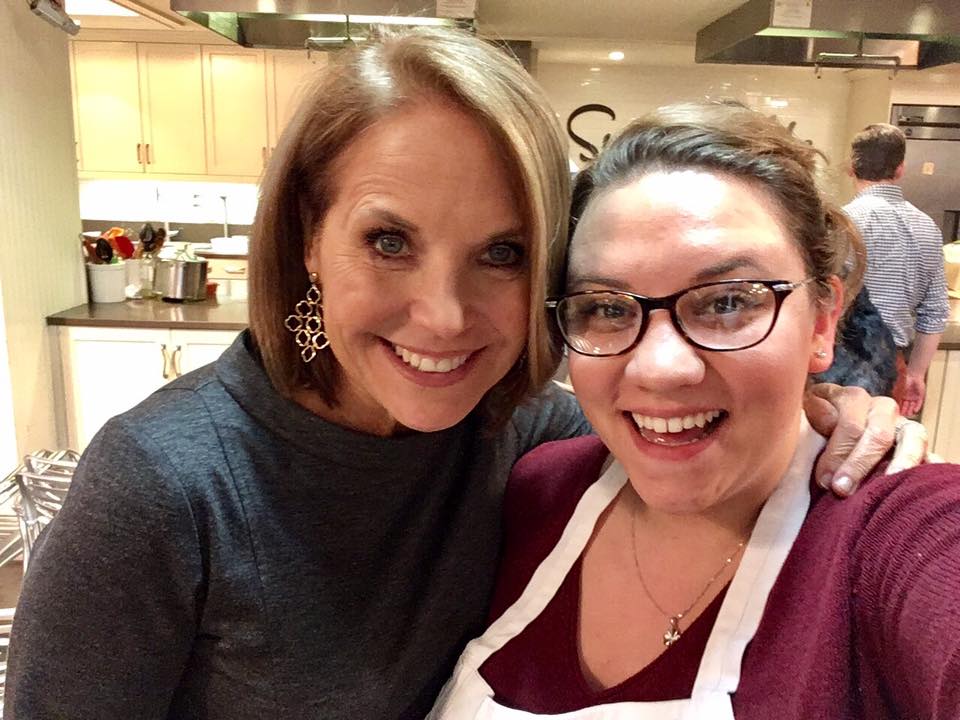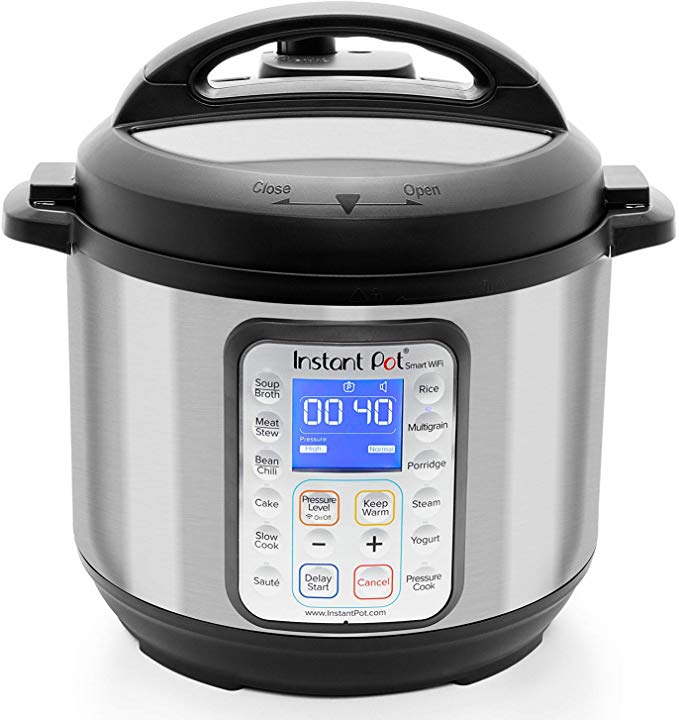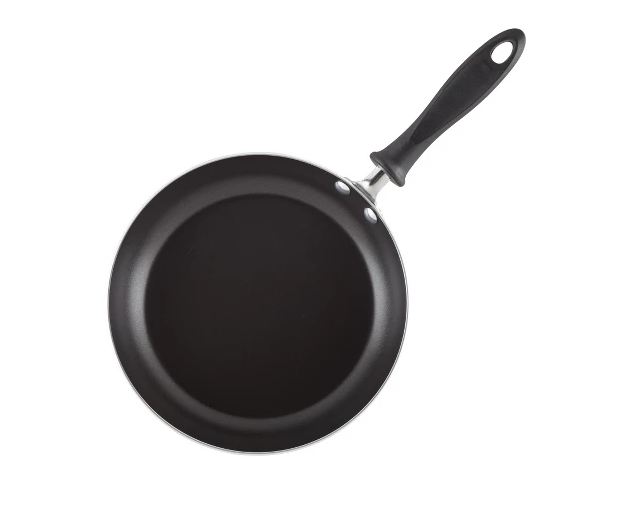Welcome to BUYABLES, a new series that will show you how to upgrade your life and the things you need to buy to do it.
My first job when I moved to New York was working as a glorified dishwasher (official title: “kitchen assistant”) at the midtown location of Sur La Table. I got the job because I had previously worked for the company and when they checked my employee file as their form of a background check, they didn’t see anything that said I was a murderer. I worked both on the floor of our retail store and in the kitchen where we held cooking classes for semi-affluent married couples looking to spice things up, private events for companies looking to bond with their teams over several bottles of wine and very large knives, and, on one occasion, Katie Couric.

All of this is to say that I am extremely passionate about cooking—specifically, making cooking accessible, affordable, and fun. A large part of that is cutting through the confusion that comes with stocking one’s kitchen and ensuring everyone I meet knows they don’t need as much stuff as we’ve all been led to believe.
Enter: pots and pans. Step away from the seeming ease and simplicity of just buying a set. You’re not going to touch half of those pots and pans, and dropping top dollar just to have a ‘matching set’ is useless considering some brands, by design, are better at sautéing or frying than searing or boiling. If you’re building up your kitchen, it’s better to purchase a single, quality pot or pan at a time. Unless you’re like me and you couldn’t fit your pots in your luggage when you moved across the country, in which case get a cheap set like this one from Target to tide you over. Ultimately, there are only three pots and pans that you need to cook pretty much anything your heart desires, whether you’re a casual cook or a professional chef.
Fry Pan
The first thing any kitchen needs is a decent fry pan. The size is dependent on how many people you’re cooking for, and the workability depends on your range of cooking. When I was in college, I used a tiny 6” fry pan for pretty much every meal because I was just cooking for myself, and I still prefer it to cook up an egg or a grilled cheese sandwich. A small, cheap pan like this 8” Farberware is perfect for reheating leftovers, cooking a quick meal for one, or sautéing a side of veggies while cooking a larger dish.
Nonstick vs. Stainless
There’s understandable hesitation about using nonstick and their potential toxic chemical coatings, but nonsticks have been PFOA-free since 2013, so there’s little to worry about unless you’re buying your pans secondhand. That said, I am of the spiritual opinion that nonsticks are bad because they trick you into thinking your food is done cooking before it is. I physically scowl whenever I see commercials for those ceramic pans that nothing sticks to, because the stick is part of the process! When proteins like chicken or beef are cooked, they naturally unstick from whatever pan they’re cooking on when they’re done on that side. It’s when you wait too long to flip, or you don’t have enough fat in your pan, that the magical unstickiness of the cooking process turns into the food burning and gluing itself back to the pan. As long as your heat isn’t too high and your pan is well-oiled, there’s little risk of messing up your food in a stainless frying pan.
If you absolutely need to have a nonstick, I highly recommend the Scanpan PRO IQ. In fact, I recommend it whether you’re looking for nonstick or stainless. I don’t care! This pan is perfect for everything! Scanpan uses recycled aluminum to make their pans, which benefit from both being hefty (to provide consistent heat) and being made of a nonstick surface that can be chipped or scraped and doesn’t become non-nonstick. Where most nonsticks are just sprayed in a nonstick coating, Scanpans have the nonstick built-in, so if you’re the type who likes pushing your uncooked food around with a metal fork, there’s no risk in that fork scraping weird gunk into your food. The benefit of Scanpan is that you can sear steak like you’re cooking in cast iron, but also scramble up some eggs. Plus, if you get a Scanpan with a metal handle (on their website, the metal handles are silver, not black), you can pop that sucker in the oven and now you’re roasting! The only warning with these pans is that you probably shouldn’t pop them in your broiler—Scanpans have a maximum temperature of 500°F.
Calphalon’s PFOA-free 10” nonstick is a way more affordable alternative to the Scanpan: It’s oven-safe (up to 450°F) and comes with a glass lid. Just make sure you remove the lid before popping it in the oven.
If you have to go stainless, All-Clad’s 8” is just fine if you’re looking for something shiny, but for the price you might as well go with the Scanpan.
Stock Pot
I consider stock pots to be functionally identical to pasta pots, and can be made into one using any pasta insert that fits (like this 8-quart insert by Tramontina) or by dumping everything into a colander. The difference between a pasta pot and a stock pot is that pasta pots are typically six or eight quarts, whereas stock pots can be huge. For a home kitchen, six to eight quarts is pretty much perfect.
The depth of a stock pot prevents liquid from cooking down too quickly, and the wide, flat base allows for even cooking as well as sautéing ingredients before adding liquid. Chili, pasta, soup, canning a big vat of jelly, and literal stock all thrive in a stock pot. I own the 8-quart Le Creuset in Flame. Le Creusets are typically the cookware that gets passed down through generations because they last so long and they look pretty—one of the in-house training guides at Sur La Table even mentioned that customers looking to own a Le Creuset were likely parents who handed down their old one or new families looking to create the tradition. I recommend Le Creuset for a stock pot versus any of their other pots because it’s not going to be worked too hard, so there’s little risk of chipping that beautiful enamel. Some wear is expected on the base of the pot, but nothing to fundamentally alter the pot’s functionality.
If you’re looking for durability and replicating an industrial kitchen, All-Clad is the way to go. The heftier price tag ($345) is due to the pot’s ability to survive heavy use (I’m talking professional kitchens here). You can bang it up for years in a busy restaurant kitchen and it’ll still work beautifully.

Sauce Pan
Sauce pans are a perfect in-between pan: You can reheat soup, make risotto, boil up eggs, or if you’re really desperate, eat cereal out of it. These little babies are a dream. Like a miniature stock pot, the higher sides prevent liquids from cooking off too quickly while the flat base allows for even cooking across the bottom and sautéing prior to adding liquids. Their fancier sibling, the saucier pan, features a rounded base which encourages even heating along the sides of the pan and is easier to tilt, which is mostly important if the pan’s whole life is centered on sauce.
Again, All-Clad is the way to go. While they do offer a small range of other pans, All-Clad’s bread and butter is the sauce pan. I own the 3 qt and it’s a dream. The handles are riveted to the pan to focus heat and an aluminum core ensures even cooking throughout. Not only does every All-Clad come with an induction outer core that can be used on induction stovetops as well as traditional flame, but their all-metal design means these pans can be transferred from the stovetop to the oven. Plus, they can get banged up without the base detaching or worry about how it looks. This pan was made to be used all the time.
If you’re not in the market to drop a dime on a pan you’ll mostly keep on the stove, the Farberware 2 qt. is a great alternative for stovetop-only use. It comes with a glass lid so you can keep tabs on your food without releasing steam, and has a grooved handle to allow easier pouring. And in terms of durability? My gramma has used this same pot for as long as I can remember to force-feed me boiled peas. Peas aside, Cuisinart’s stainless 2 qt. sauce pan checks a lot of boxes, too: You can pop it in the oven (with the lid) up to 550° F. Both are a lot lighter than the All-Clad, which is a bonus if you’re not looking to get a workout while making gravy.
If all of this is too much fuss and bother, just get an Instant pot (like this 6-in-1 6-quart) and dump all your food in that and eat Instant Pot “stew” all the time until you get tired of it like everyone else. Their new line has wifi, for some reason.
VICE Media makes a small commission on products linked in this article.
from VICE https://ift.tt/307LsGF
via cheap web hosting

No comments:
Post a Comment